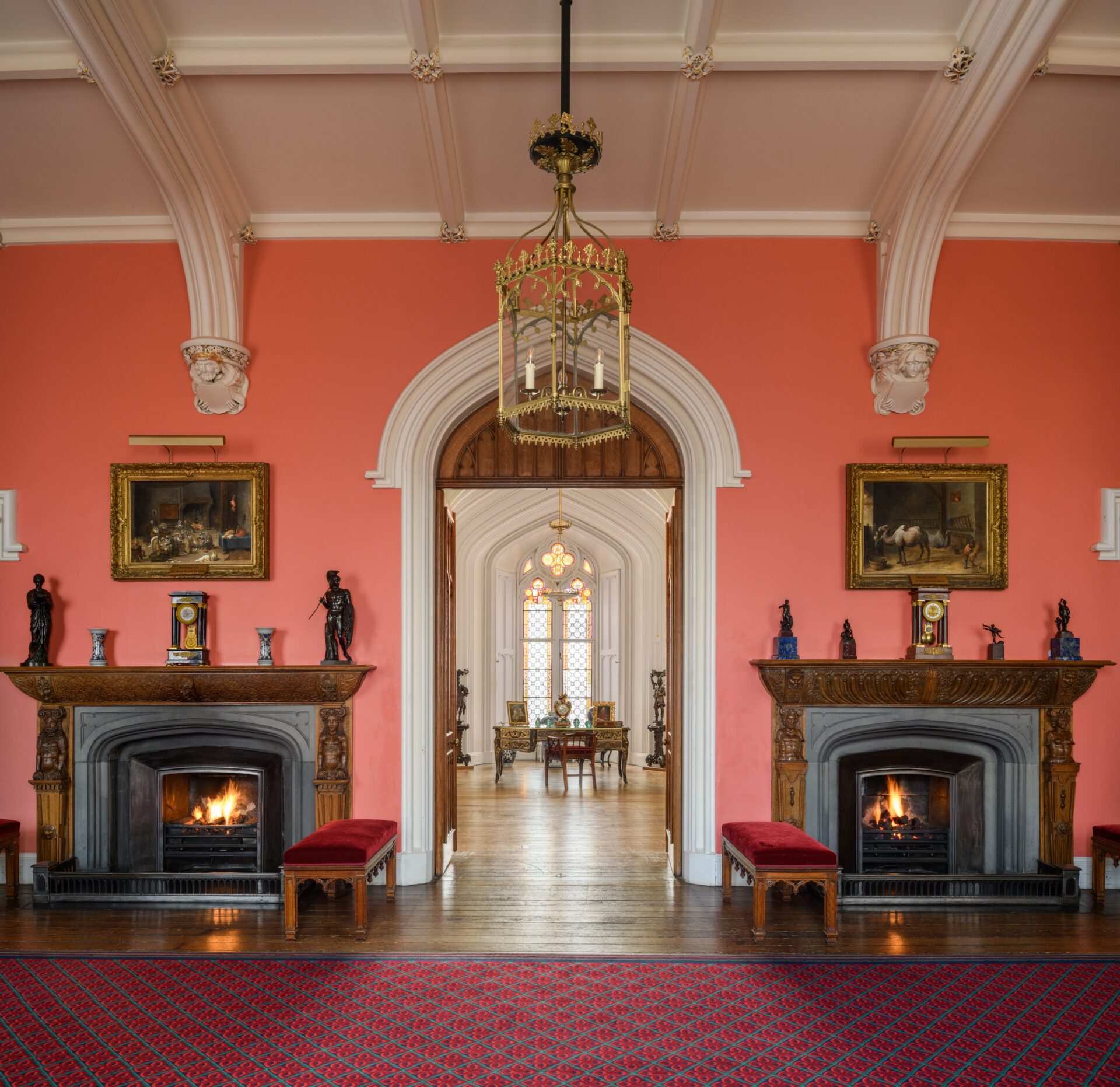In architectural terms, an ante-room is a small room through which one enters into a larger, more spectacular or purposeful room. In essence, it is a chamber designed for waiting in. You would think then that very little decorative thought would need to be given to such a small space, but you only have to look up to see that what this little room lacks in square footage, it more than makes up for in stature.
In this room, William Atkinson’s Gothic vision comes to life. With its exquisite, jewel-like stained glass window and intricately vaulted ceiling, the room pays homage to the old abbey that once stood here. As you look up, the cloister-like arches, reminiscent of religious architecture, evoke a sense of peace and encourages reflection and contemplation.
Upon the desk is the only Scottish clock in the palace. This unassuming timepiece was made by Burnfield of Perth in 1850. Also on this desk is a portrait of Sir David Murray who was created 1st Lord Scone in 1604 and then Viscount Stormont in 1621. Both titles still remain within the family today. Sir David Murray was the royal cup-bearer to King James VI of Scotland and was awarded the lands and Palace of Scone after transporting the King to safety during the Gowrie Conspiracy of 1600.
The precise details of the conspiracy are still debated today and the sequence of events remain shrouded in mystery. We do know that John Ruthven, 3rd Earl of Gowrie, already had a history of treason and was not an admirer of the King, who had executed his father, William Ruthven, for his part in the Raid of Ruthven. At the time, King James VI was staying at nearby Falkland Palace, when he was approached by John’s brother, Alexander Gowrie, who told the King they had detained a foreign prisoner with a considerable amount of gold at the Gowrie House in Perth. Knowing that the King would want to interview the prisoner, Alexander told him to ride to the house in Perth with only a handful of noblemen, implying that time was of the essence and the detention of the prisoner must be kept a secret. On arrival, the King was presented with a small meal after which he was taken into a turret room through a series of locked doors. Once inside the room, he was held hostage by a man called Henderson, one of Gowrie’s servants. The turret room had two closed windows, and eventually the King was able to persuade Henderson to open one of them. After this, a struggle broke out which was seen by the King’s courtiers below. Realising that their sovereign was in danger, they fought their way up the stairs and rescued the King. As the people of Perth became stirred up by the events, Sir David Murray went out into the streets to calm them and so prevented the occasion from turning into a riot. He later helped return the King to the safety of Falkland Palace.
Upon the floor is placed a collection of Chinese Jardinière. The word jardinière is taken from the French word for garden, jardin. They would traditionally be used as flower pots or planters. These particular pieces were given to the present Earl’s maternal great-grandmother on her visits to the Dowager Empress of China.
